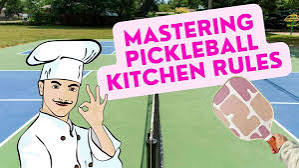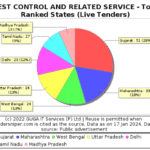Pickleball, a sport that combines elements of tennis, badminton, and table tennis, has been rapidly gaining popularity around the world for its accessibility and fun gameplay. One of the key elements of pickleball that sets it apart from other racquet sports is the kitchen, also known as the non-volley zone. Understanding and mastering the kitchen rules is essential for players looking to improve their game and compete at a higher level. In this comprehensive guide, we’ll explore everything you need to know about the pickleball kitchen rules, from its dimensions to its strategic implications.
What is the Kitchen in Pickleball?
The kitchen, or non-volley zone, is a seven-foot area adjacent to the net on both sides of the court. It extends from the net to a line seven feet away from the net, parallel to it. The purpose of the kitchen is to prevent players from executing volleys (hitting the ball before it bounces) too close to the net, ensuring fair play and strategic gameplay.
Key Kitchen Rule Components
- Volleying: Volleying is a fundamental aspect of pickleball, and players must adhere to specific rules when volleying near the kitchen. Players must not enter the kitchen or touch the kitchen line while volleying. Doing so results in a fault, and the opponent earns a point.
- Foot Faults: In addition to avoiding the kitchen with their paddle and body, players must also ensure that their feet do not enter the kitchen while volleying. Stepping into the kitchen before the ball has bounced constitutes a foot fault, resulting in a point for the opposing team.
- Double Bounces: If the ball bounces twice on one side before a player hits it, the opposing team wins the rally. However, if the ball bounces once on each side, it remains in play, and the rally continues.
- Serving: During the serve, players must stand behind the baseline and outside the kitchen. They must also serve diagonally to the opponent’s service court. Failure to do so results in a fault, and the serve is given to the opponent.
- Faults and Points: Any violation of the kitchen rule, whether stepping into the kitchen, touching the kitchen line, or volleying from within the kitchen, results in a fault. The opponent earns a point, and the serve may change sides.
Strategies for Success
While the kitchen rule imposes restrictions, players can use it to their advantage:
- Dinking: Dinking is a soft, controlled shot aimed at placing the ball just over the net and close to the opponent’s side. Dinking can force opponents into the kitchen, setting up opportunities for a winning shot.
- Lobbing: Lobbing is a well-executed shot that sends the ball high and deep into the opponent’s court. A well-timed lob can push opponents deep into their court, making it difficult for them to approach the net and potentially forcing them into a kitchen violation.
- Drop Shots: Drop shots are shots that are hit softly and close to the net, causing the ball to drop quickly and making it difficult for opponents to return. Drop shots can catch opponents off guard, forcing them to make a difficult shot from the kitchen.
Common Misunderstandings and FAQs
- Can you enter the kitchen after hitting a volley? Yes, once the ball has bounced, players are free to enter the kitchen.
- Can you reach over the kitchen to hit a volley? No, players must not reach over the kitchen to hit a volley. Doing so results in a fault.
- Can you hit a volley while standing in the kitchen if the ball bounces in the kitchen? No, players must not hit a volley while standing in the kitchen, even if the ball bounces in the kitchen. Doing so results in a fault.
Conclusion
The kitchen rule is a fundamental aspect of pickleball that adds depth and strategy to the game. By understanding and leveraging the kitchen rule, players can enhance their gameplay and outmaneuver opponents. Whether you’re a beginner or an experienced player, mastering the intricacies of the kitchen rule is essential for success on the pickleball court. Keep these rules in mind next time you step onto the court, and watch your game improve as you navigate the non-volley zone with skill and precision.







